HelixFormer: Learning Cross-Image Object Semantic Relation in Transformer for Few-Shot Fine-Grained Image Classification
Published in ACM MM-2022, 2022
Abstract
Few-shot fine-grained learning aims to classify a query image into one of a set of support categories with fine-grained differences. Although learning different local differences via Deep Neural Networks has achieved success, how to exploit the query-support cross-image object semantic relations in Transformer-based architecture remains under-explored in the few-shot fine-grained scenario. In this work, we propose a Transformer-based double-helix model, namely HelixFormer, to achieve the cross-image object semantic relation mining in a bidirectional and symmetrical manner. The HelixFormer consists of two steps: 1) Relation Mining Process (RMP) across different branches, and 2) Representation Enhancement Process (REP) within each individual branch. By the designed RMP, each branch can extract fine-grained object-level Cross-image Semantic Relation Maps (CSRMs) using information from the other branch, ensuring better cross-image interaction in semantically related local object regions. Further, with the aid of CSRMs, the developed REP can strengthen the extracted features for those discovered semantically-related local regions in each branch, boosting the model’s ability to distinguish subtle feature differences of fine-grained objects. Extensive experiments conducted on five public fine-grained benchmarks demonstrate that HelixFormer can effectively enhance the cross-image object semantic relation matching for recognizing fine-grained objects, achieving much better performance over most state-of-the-art methods under 1-shot and 5-shot scenarios.
Motivation
(a) Previous fine-grained works attempt to learn discriminative local image parts but have no interaction between support-query images, which may cause relation matching confusion between different fine-grained objects and yield misclassification. (b) In contrast, HelixFormer consisting of RMP and REP modules can mine image pair-level semantically related parts, e.g. birds’ wings, and further learn how to distinguish these subtle feature differences to avoid misclassification.
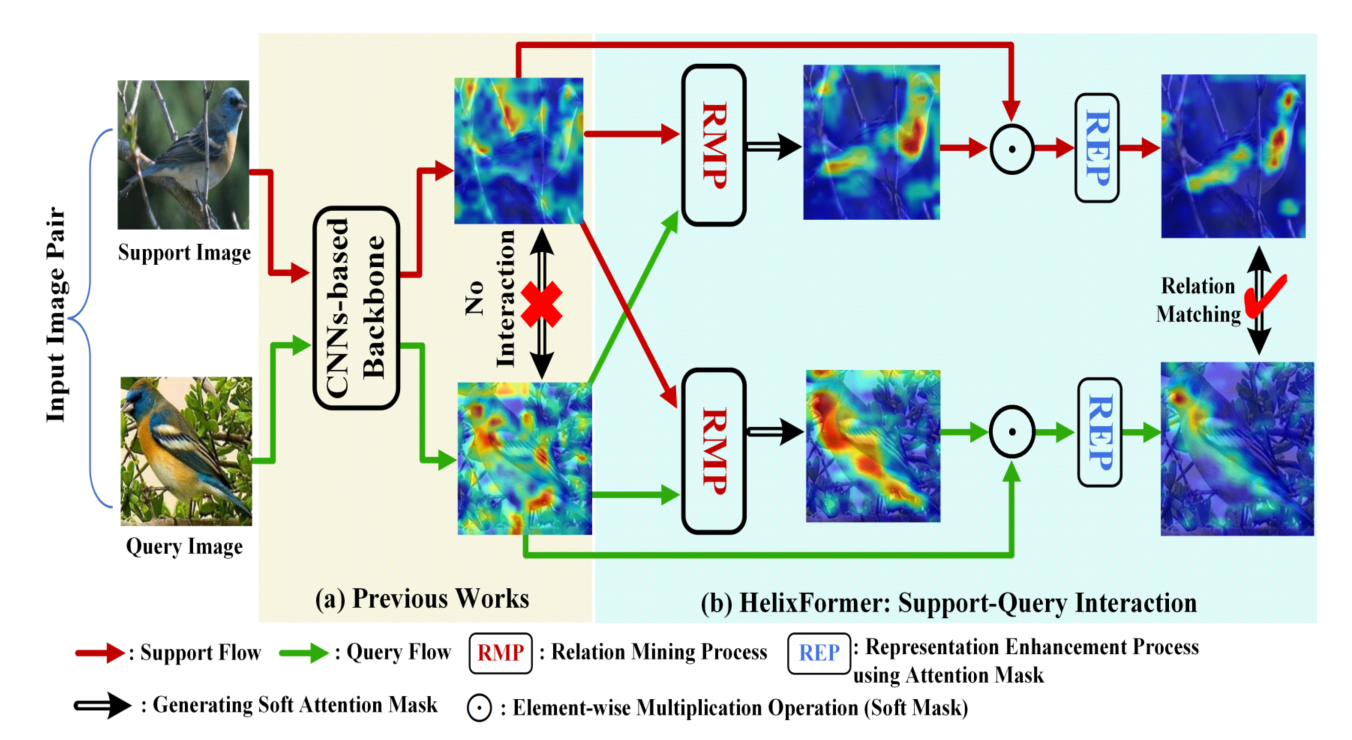
Framework
The framework of HelixFormer is illustrated as follows.
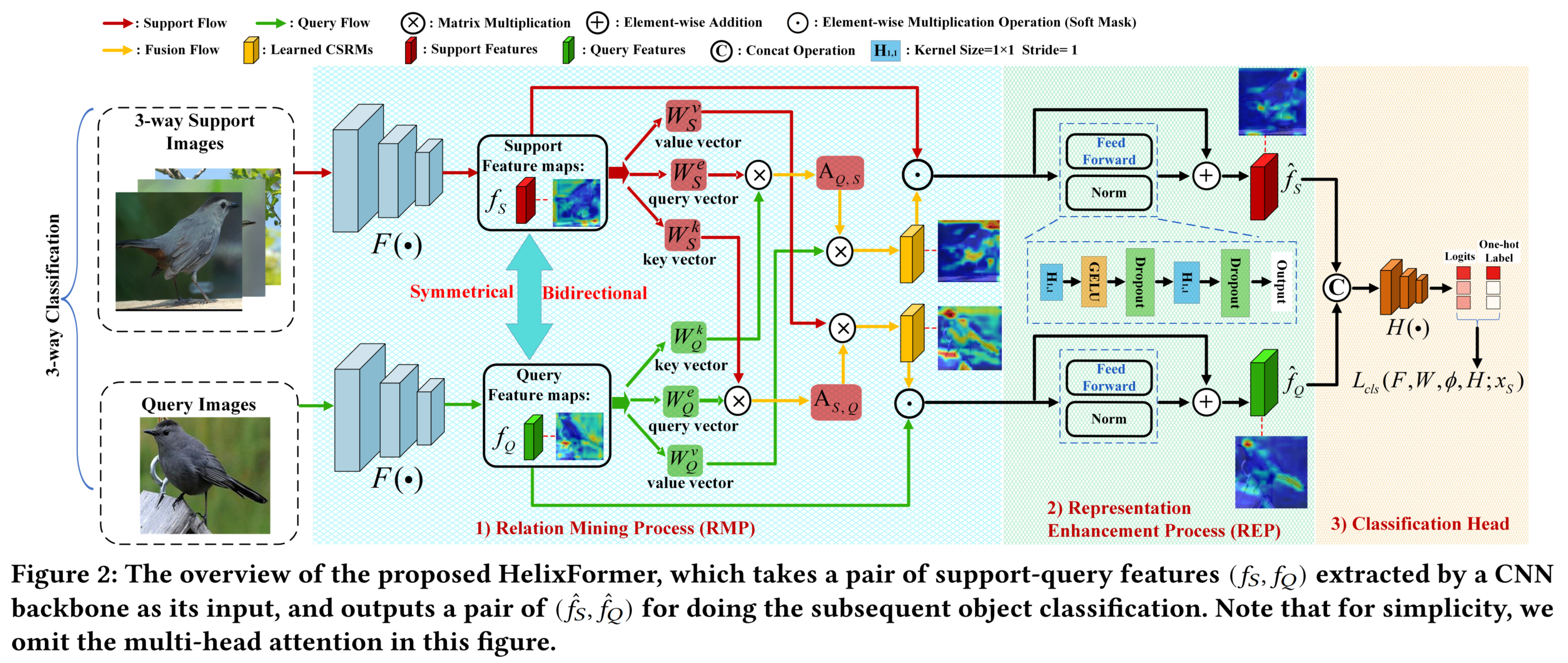
Besides, we study other Transformer-based cross-attention model designs, including 4 typical cross-attention structures.
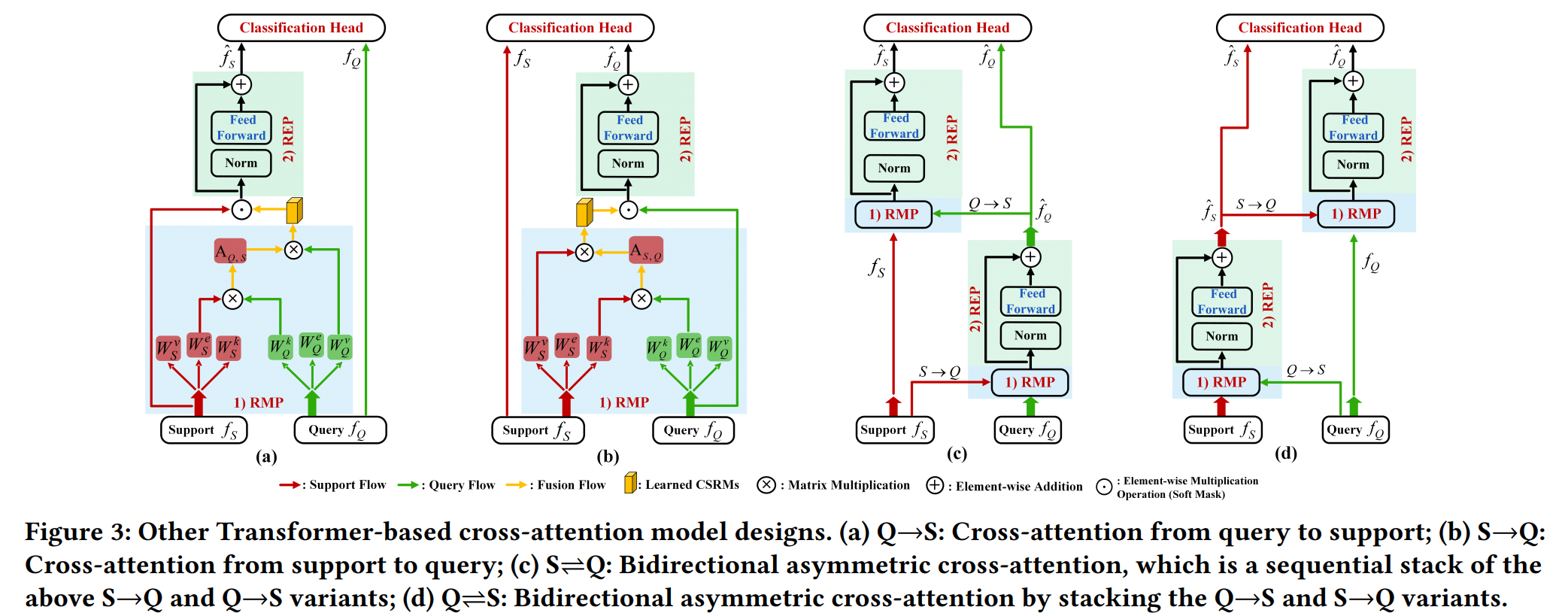
Experimental Results
Our experiments are conducted on Stanford Dogs, Stanford Cars and NABirds. The main experimental results of HelixFormer:
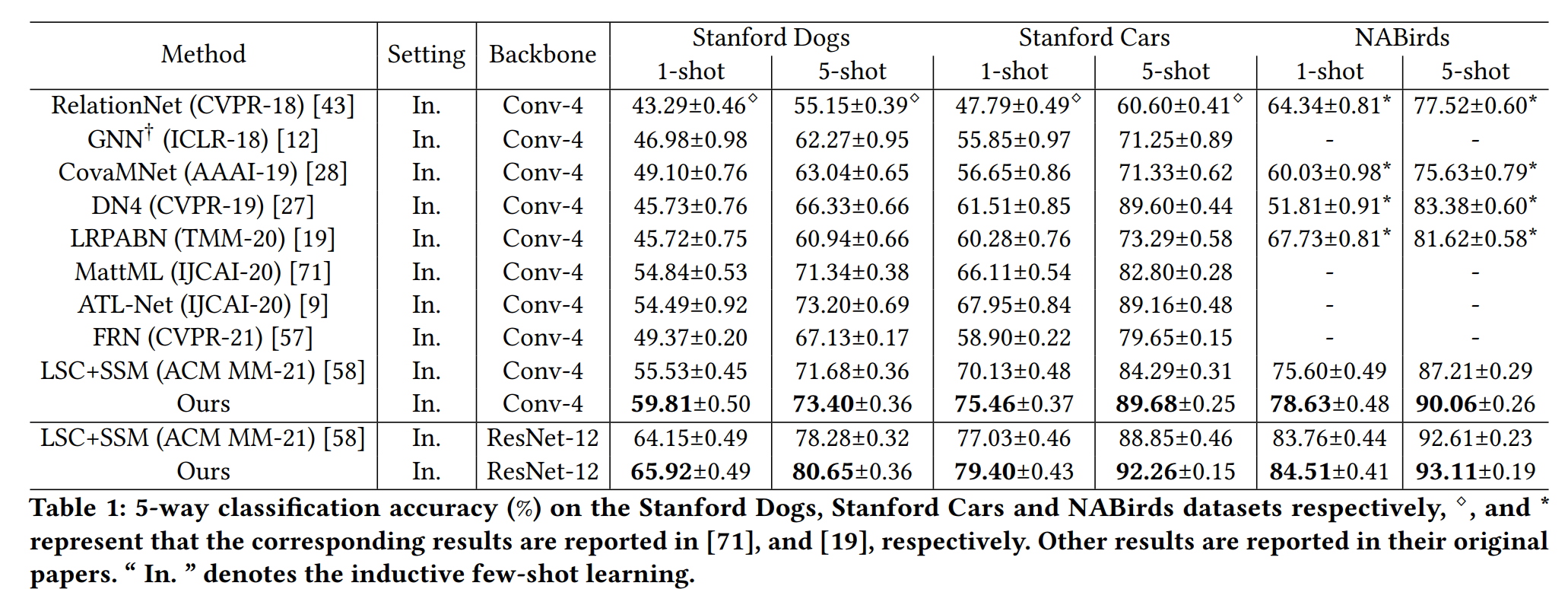
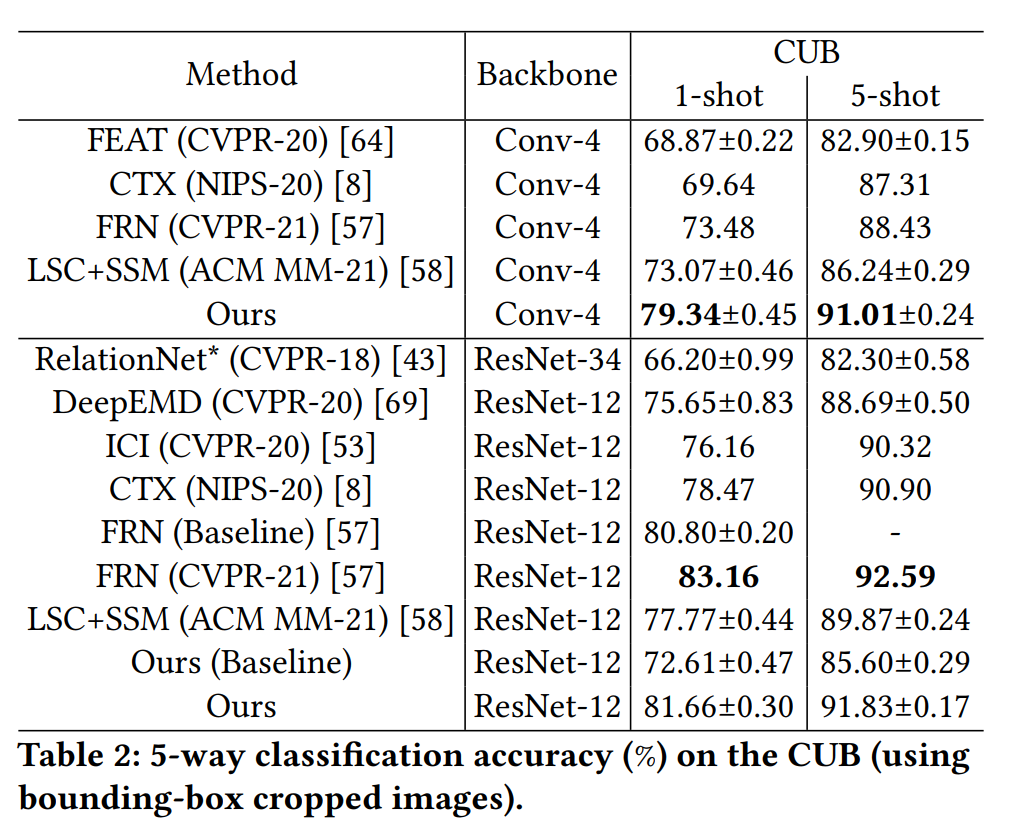
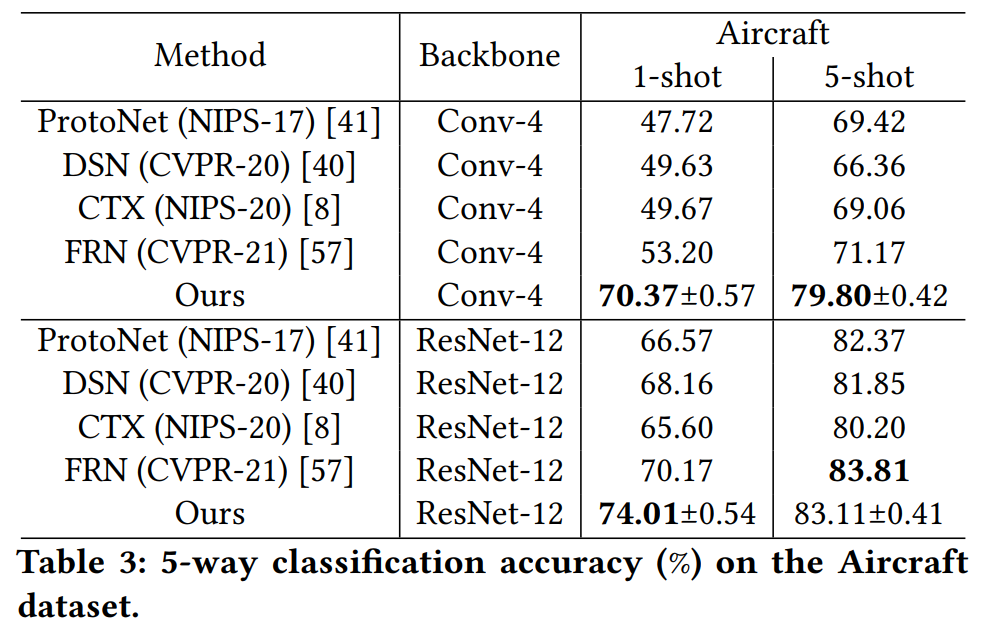
Conclusion
In this work, to exploit the semantic relations across different fine-grained objects, we proposed a Transformer-based double-helix cross-attention model, namely HelixFormer, which is composed of a Relation Mining Process (RMP) to discover the cross-image object semantic relation and produce patch-level cross-relation maps, and a Representation Enhancement Process (REP) to enhance the identified discriminative local features for final recognition. Experimental results demonstrate that such a bidirectional and symmetrical structure has the merit of ensuring the cross-image object semantic relation consistency, thus further improving the model generalization ability on few-shot fine-grained learning.
